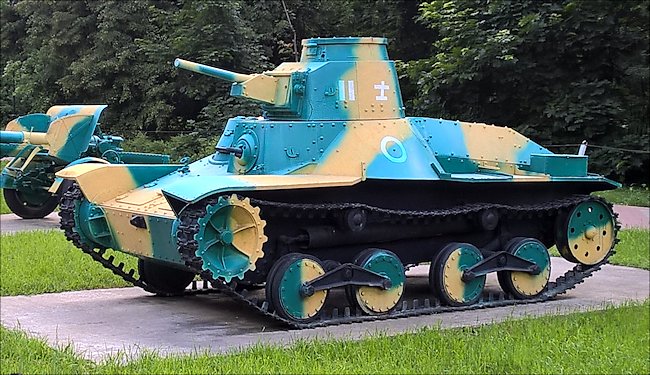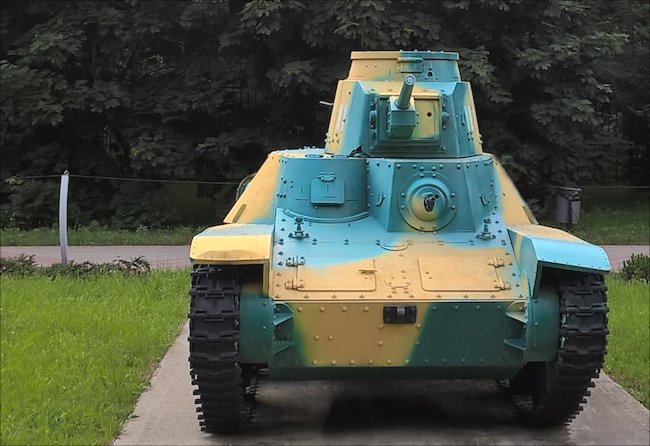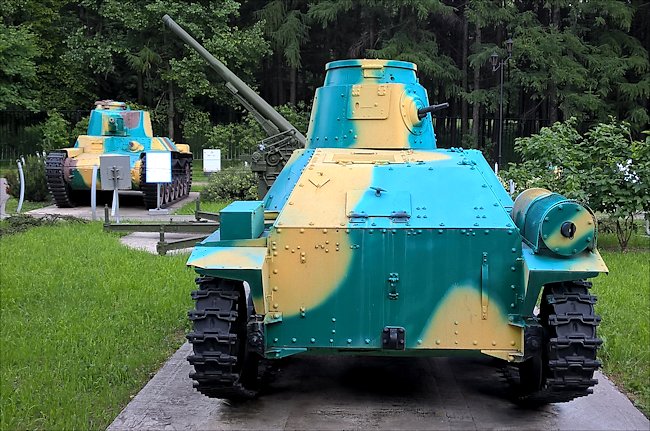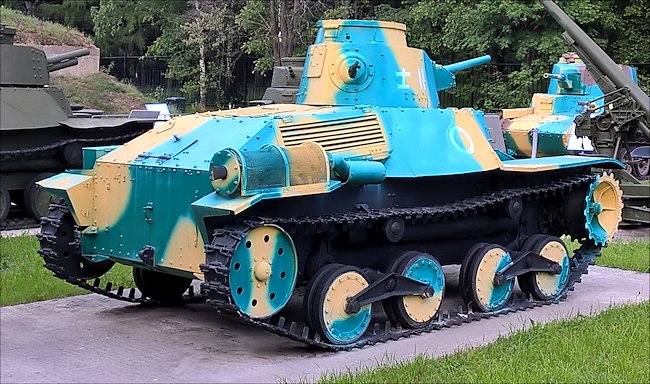Type 95 Ha-Go Light tank Moscow
The Russian Central Museum of the Great Patriotic War 1941 - 1945 in Moscow has an outdoor collection of captured Japanese WW2 tanks including a Type 95 Ha-Go light tank. It was designed to fight enemy infantry not tanks. Around 2,300 were produced and they took part in the Second Sino-Japanese War and fought against the Russians, Americans, British and Commonwealth forces during WW2.

Type 95 Ha-Go tank at the Central Museum of the Great Patriotic War 1941 - 1945, Park Pobedy, Moscow, Russia
Location
This Japanese Type 95 Ha-Go light tank is looked after at the Central Museum of the Great Patriotic War 1941 - 1945, Park Pobedy in Moscow. You will find it in the road called Kutuzovsky Ave in the west of the city. The nearest metro station is Park Pobedy. The tanks are kept in an outdoor section to the left of the main museum building, as you look at the entrance. Follow the signs to the 'War Weaponary and Fortification' exhibit. There are no tanks in the main museum.

The 37mm anti-tank gun and 7.7mm hull machine gun position on the Japanese WW2 Type 95 Ha-Go light tank
Specifications
The Imperial Japanese Army's Type 95 Ha-Go light tank was designed in 1933 and produced between 1935 and 1943. Records show that2,300 were built. It had a crew of three: commander/gunner, hull machine gunner and driver. It had an armour thickness that ranged between 6 mm and 16 mm. it weighed 7.4 tonnes.
It was armed with a 37 mm type 98 anti-tank gun and two 7.7 mm type 97 machine guns. It was powered by a Mitsubishi A6120VDe air-cooled inline 6-cylinder 14.4 L diesel engine and produced 120 hp. It had a maximum road speed of 45 km/h (28 mph) and a range of 250 kilometres (155 miles).

Note the rear machine gun on the turret of this Type 95 Ha-Go light tank

The tracks and roadwheels are not the original on this Type 95 Ha-Go tank. The tank comes from Shumshu, in the Kuril Islands, where it was recovered in the late 90s
WW2 Tank Books

